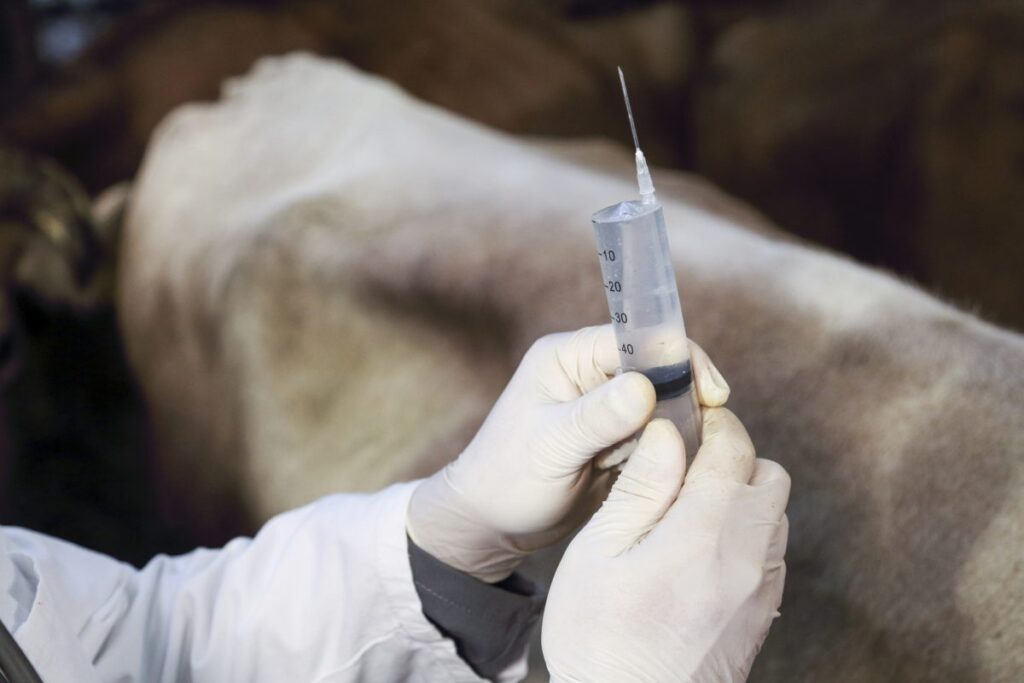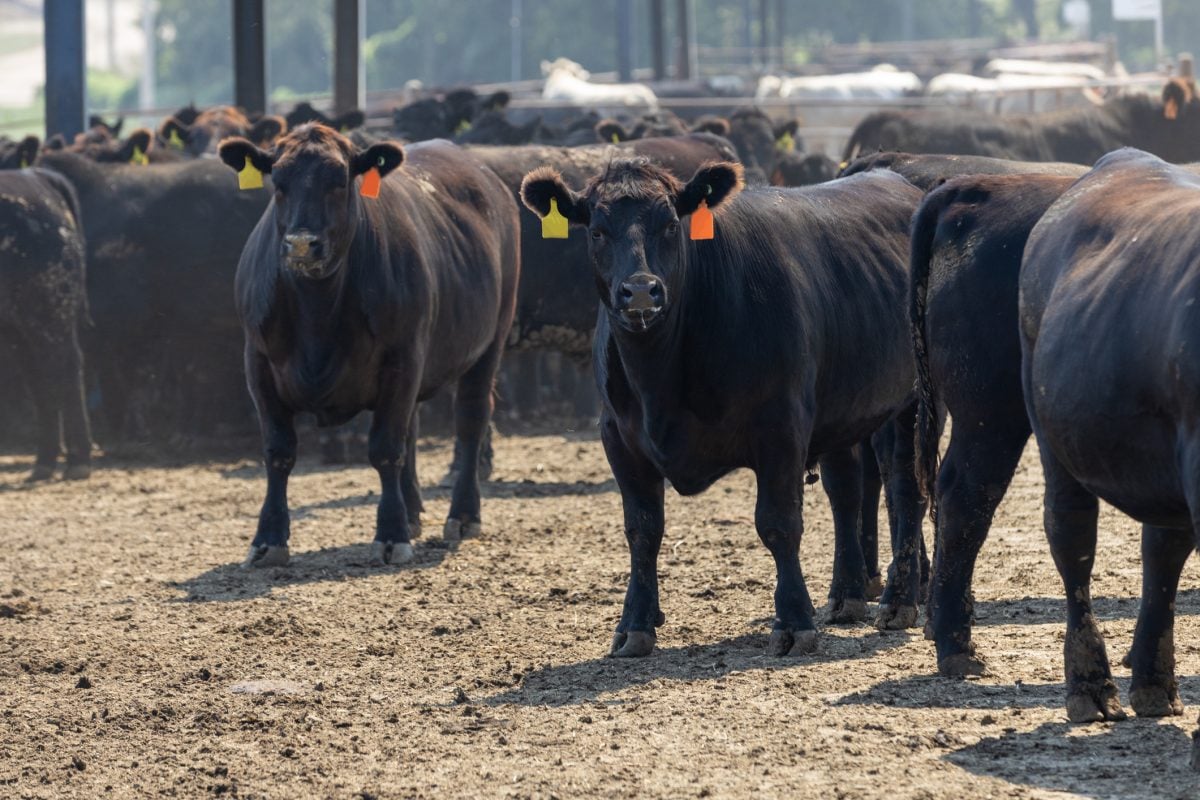Changing spread, prevalence of animal diseases causes new challenges for food, agriculture

Animal health is a critical component of public health, food security and economic stability in an increasingly interconnected world, says the World Organization for Animal Health (WOAH) in its inaugural report.
“The spread, prevalence and impact of infectious animal diseases is changing, bringing new challenges for agriculture and food security, human health and development, and natural ecosystems,” said Dr. Emmanuelle Soubeyran, Director General of WOAH in a news release.
“Alongside other measures, vaccination remains one of the most powerful disease prevention tools available, saving countless lives, preventing economic losses and reducing the need for antimicrobial treatments,” Soubeyran added.
Read Also

U.S. livestock: Cattle continue slump, hogs rise
Chicago cattle futures slid for the second consecutive day on Wednesday while hog futures continued to climb.
The ability to track, analyze and act on animal health trends is a must for mitigating disease outbreaks, keeping livestock production sustainable and maintaining biodiversity, says the State of World’s Animal Health 2025 report released May 23 ahead of WOAH’s 92nd General Session in Paris.
The report emphasized the importance of disease prevention for reducing the need for antibiotic treatment and limiting the development of drug-resistant diseases.
Climate change and increased trade were cited as factors influencing the spread and prevalence of animal diseases. Many diseases are preventable through a combination of vaccination, improved hygiene and biosecurity measures, but the report said access to animal vaccines remains uneven around the world.
Progress and setbacks in 2025
This year, several regions have seen significant disease outbreaks that required urgent intervention.
Climate change, international trade and evolving pathogen dynamics influenced disease distribution and severity, reinforcing the importance of robust surveillance and early warning systems, said WOAH.
Regional disparities in animal health remain a key concern, as gaps in veterinary infrastructure and disease-monitoring capabilities create vulnerabilities in certain parts of the world.
Foot and mouth disease
During the reporting period of 2024 into the first part of 2025, 18 countries reported a total of 216 foot and mouth disease (FMD) outbreaks to the World Animal Health Information System (WAHIS). That included 29 exceptional epidemiological events, e.g. the first occurence of a new disease strain, a sudden change in distribution of a disease, or the first instance of a disease in a country or zone.
At the time of this report’s publication, 180 FMD outbreaks linked to 19 exceptional epidemiological events remained ongoing globally.
African swine fever
African swine fever (ASF) expanded its geographical range significantly, making control and eradication increasingly challenging. Despite these obstacles, global control of ASF remains possible with sustained efforts and international co-operation, said WOAH.
For 2024, WOAH received 68 immediate notifications from 16 countries and territories, reporting a total of 6,807 outbreaks. These outbreaks resulted in 195,191 reported cases, with 222,174 animal losses in domestic pigs.
Given the global impact of ASF on the pig industry and wildlife, development of ASF vaccines has become a priority. Recent advancements in modified live vaccines have provided hope for controlling ASF. However, WOAH cautioned against the use of substandard vaccines, as they may not provide effective protection and could worsen the spread of disease.
Avian influenza
For 2024, 42 countries or territories reported new outbreaks of high pathogenicity avian influenza (HPAI), or bird flu, in poultry, while 55 countries or territories reported new outbreaks in non-poultry, including wild birds and mammals.
A total of 943 outbreaks were reported in poultry, alongside 2,570 outbreaks in non-poultry species, including 1,548 outbreaks in wild birds and 1,022 outbreaks in mammals. The reported figures included 6.18 million poultry cases and 82.1 million poultry losses. Wild birds accounted for 11,866 cases, and mammals had 325 reported cases.
As of the New Year, 19 countries had self-declared freedom from HPAI in poultry. Two countries reported HPAI-free zones and three countries declaring HPAI-free compartments.
A notable development in 2024 was the increase in HPAI outbreaks in mammals. Following the first report of HPAI in dairy cattle in the U.S. in March 2024, the number of outbreaks in mammals significantly increased. In total, 1,022 outbreaks in mammals were recorded, compared to 459 outbreaks in 2023. Among these, 926 outbreaks occurred in cattle in the U.S.
HPAI’s global spread has hit areas previously unaffected by the disease, including Latin America and Antarctica. This spread marks a serious concern for experts.
WOAH urged member nations to maintain vigilance in surveillance and biosecurity, and to adopt preventive strategies at the farm level.
WOAH emphasized safeguarding people in close contact with infected animals and advised against unjustified trade restrictions.
Peste des Petits Ruminants
Between January 2024 and April 2025, a total of 165 peste des petits ruminants (PPR) outbreaks were reported to WAHIS by nine countries.
Due to the highly contagious and transboundary nature of PPR, the disease is said to pose a persistent threat to small ruminant populations across regions with shared borders and livestock trade routes. Uncontrolled animal movements, porous frontiers and informal trade networks facilitate the rapid spread of the virus across national boundaries, particularly in areas with limited veterinary infrastructure, said WOAH.
Lumpy skin disease
During the period under study, 319 lumpy skin disease outbreaks were reported to WAHIS from 11 countries. The disease was detected for the first time in northern Africa and Japan. It also reoccurred in Eastern and Southern Asia.
Bluetongue virus
Bluetongue is a viral disease that affects ruminants like sheep, cattle and goats, spread by tiny biting midges. Once mostly confined to tropical and subtropical areas, it has steadily made its way into the Mediterranean basin and parts of Southern Europe since the late 1990s. While it poses no risk to human health, its impact on animals can be devastating, particularly for sheep. The disease not only leads to high mortality and reduced milk production but also disrupts trade and burdens farmers with costly control measures.
New World screwworm
New World screwworm (Cochliomyia hominivorax) is an endemic disease in certain Caribbean and South American countries, with Chile being the only exception where it was last reported in 1947. The disease was eradicated in Central America in the early 2000s, the United States in the 1960s, and Mexico in the 1970s.
During the reporting period, 8,363 outbreaks were reported to WAHIS by seven countries, involving 13 exceptional epidemiological events. The disease was detected for the first time in Mexico in December 2024, while it reoccurred in Nicaragua, which accounted for over 60 per cent of the reported outbreaks. Other affected countries included Belize, Costa Rica, El Salvador, Guatemala and Honduras.
During the reporting period, a total of 3,626 bluetongue outbreaks were reported to WAHIS by 24 countries, involving 58 exceptional epidemiological events. In Europe, serotype 3 caused outbreaks in several countries, including Austria, Czech Republic, Denmark, France, Germany, Greece, Liechtenstein, Luxembourg, Norway, the Netherlands, Poland, Portugal, Spain, Sweden, Switzerland and the United Kingdom.
Serotype 12 was reported for the first time in the Netherlands while serotype 8 was reported for the first time in Portugal and North Macedonia.
Source: Farmtario.com


